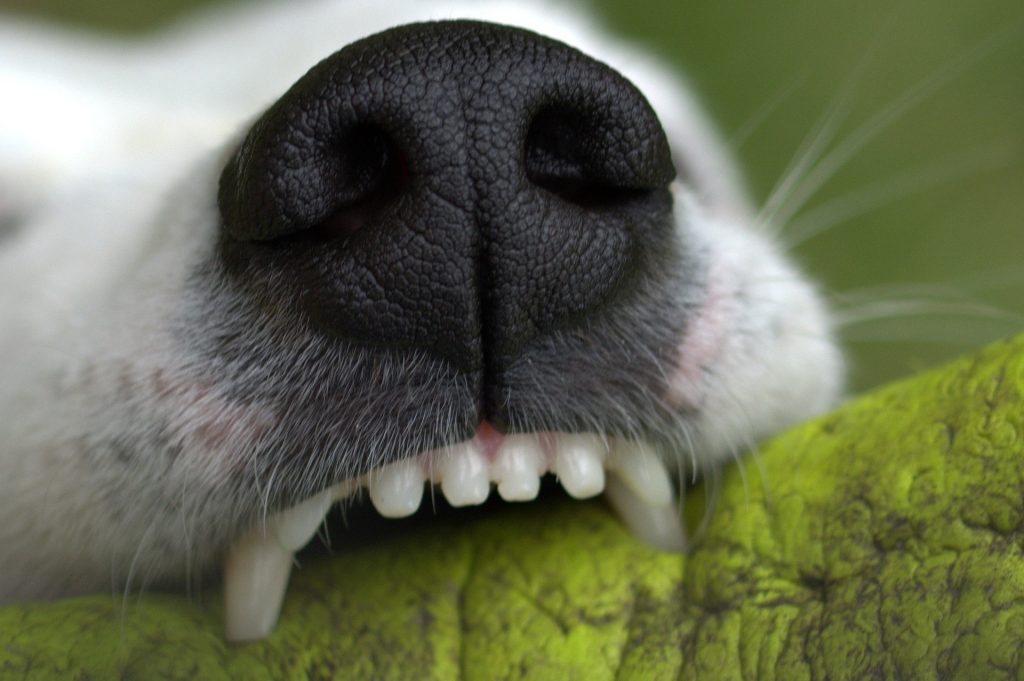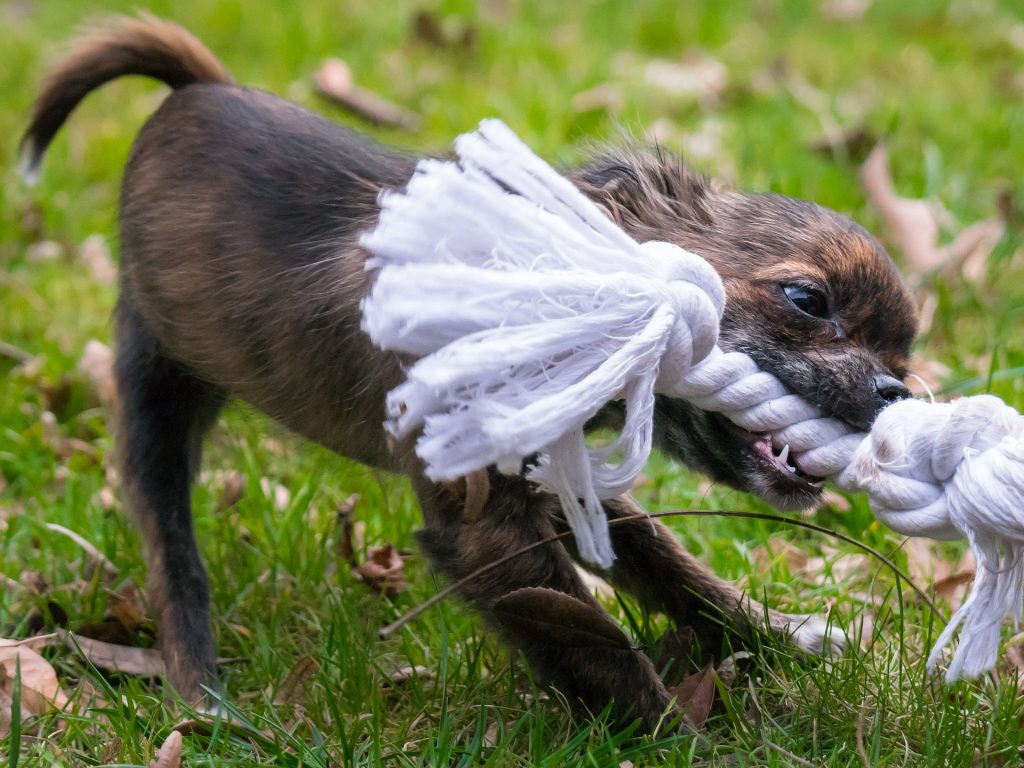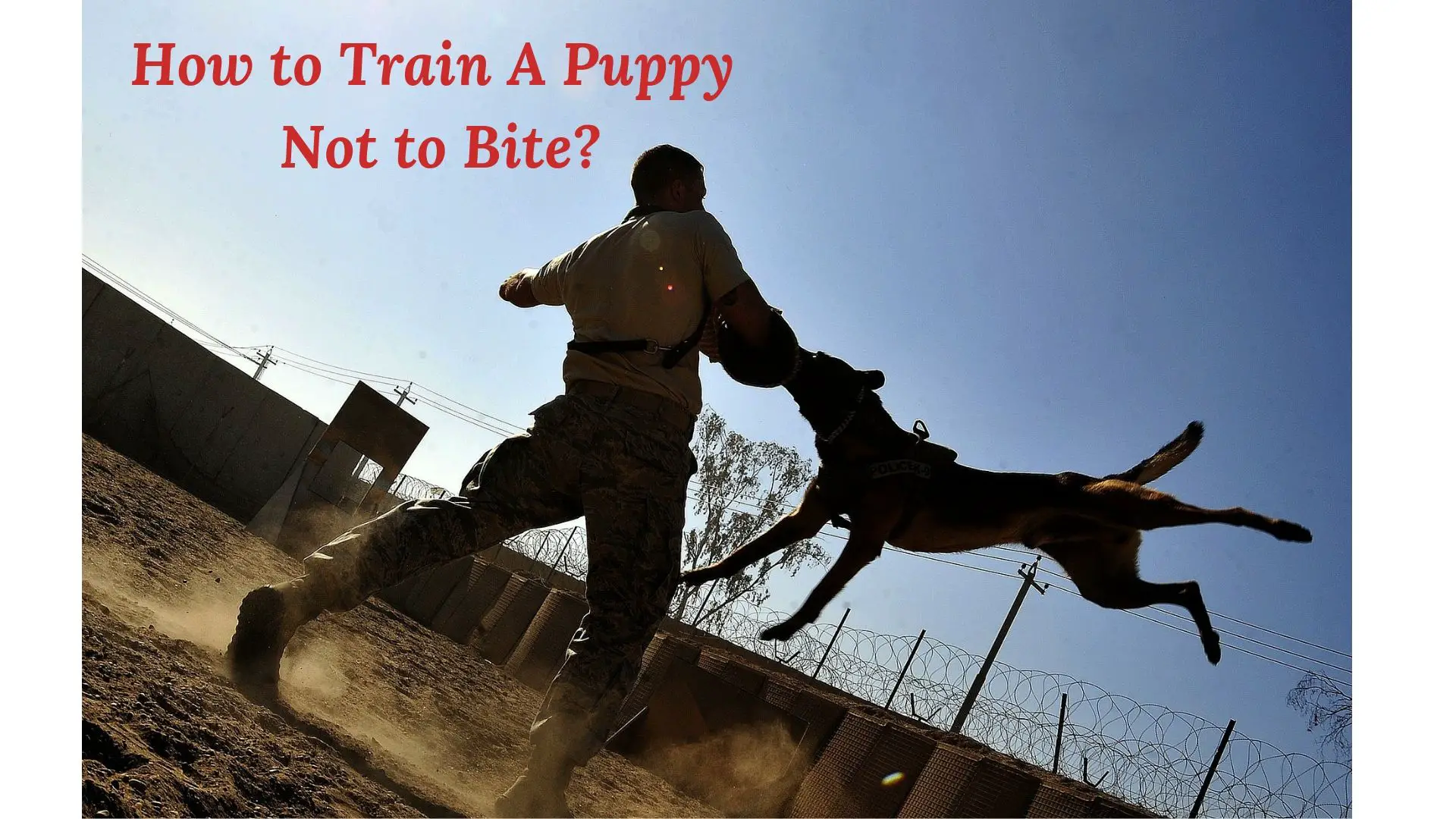Puppies are so darling. All it takes is one look into their mesmerizing eyes, and all the hardships concerning puppyhood go out of the window.
You know what, love is grand and everything, but we shouldn’t allow mishaps and problematic behavior simply breeze us by. With time, these unaddressed issues will pile up, and their cuteness will not fix the developed problems.
Today, I want to answer a question a lot of people seem to ask. If you’re wondering how to train a puppy no to bite, then keep on reading this blog post.
Our dogs, they glamorous and glorious, but remember that no one is perfect and dogs are no exception to that rule.

Table of Contents
How to train a puppy not to bite – Why do puppies bite?
Before we talk about the solution, we must first address the problem. Why do puppies bite in the first place? Well, like most baby mammals, puppies go through a teething process.
This phase, though incredibly frustrating to us, is still very annoying and a bit painful to the puppies.
If a puppy bites the mailman’s hand, or your foot, or even your Uggs boot, know that they’re not doing that with vicious intentions.
It is just that biting somehow lessens the amount of pain and antsy state that they’re currently in.

How to train a puppy not to bite – When do they start teething?
Puppies start teething when they’re around the age of three to four months old. The teething phase usually ends once they turn seven or eight months old.

However, you don’t have to wait for the seven or eight months to go by to get rid of this problem. There are actually effective ways which you can use to reduce and possibly stop your dog from biting you.

How to train a puppy not to bite- When to start training them
What’s the suitable age for you to start training your puppy?
Well, you can start as soon as you adopt your puppy. Since puppies are usually adopted when they are eight weeks old, you can pretty much start right away.

However, if for some reason your puppy is younger than eight weeks, let’s say you rescued a puppy, then wait until they turn eight weeks before starting any sort of training.
Are you wondering why it’s dangerous to train your puppy before they turn eight weeks old? Well, it’s because they’re still not developed enough to undergo such training.
Puppies who are separated from their mothers or little box before they turn eight weeks old usually suffer from behavioral problems and even mental health issues.
So please, if you’ve rescued a puppy, and they turn out to be younger than eight weeks old, then consult with a veterinarian. You should see what you can do to help minimize the adverse effects of your puppy being isolated from their mum and their litter box at such a young age.

How to train a puppy not to bite – Training techniques
Let’s talk about training techniques. To train a puppy to stop biting, you need to focus on a few training techniques and a couple of handy tips.
These training techniques include speaking their language, using positive reinforcement and attention redirection. Other methods and useful tips include using bite inhibition, creating distractions, and dissuading bites.
The techniques I’ve mentioned are considered as essential basic training techniques that could get used for almost any type of dog training you want to undergo. Up first on our list is breaking off the communication barrier.
The power of words
Now, I know that you can’t understand your dog’s language and your dog can’t understand any sort of human communication. However, by using the correct tools, we can make the dog know what you are saying.
Spoken words are such a powerful tool, but when used alone when communicating with your four-legged companion, it is probably going to be a big failure.
However, if we combine spoken words with other things such as body language and emotions, then we can create a powerful translation tool that your dog could use.
Emotions and body language alone won’t be as effective. They must be used with spoken words.
Why?
Well, because when you repeat the same word again and again with the same body language and emotion, your dog will understand what you’re saying and connect the dots.
So, with time, they might be able to understand what the word means without using that sturdy bridge made of body language and emotion.
An example
Let me explain this more by giving an example. Let’s say you’re playing with your cute little puppy, and out of nowhere, they bite your hands. What are you going to do?
First, you’re going to pull your hand away. Then, you will use the power of spoken words and say, “stop.” Next, you’re going to pretend like you’re upset and whimper a bit.
Doing these things is like speaking to your dog in their own language. The whimper decodes the phrase “Stop, I getting hurt” into a language that dogs can understand.

When many puppies or dogs are playing together, and one gets hurt, the one in pain will whimper. This whimpering tells the other dogs to stop playing so roughly with the hurt dog because they’re in pain because of them.
You should whimper and say no when you pretend like you got hurt. They’re going to connect the word no to the whimpering sound and build a negative connotation to that word.
So whenever they hear the word no, later on, they will understand that they have to stop what they’re doing. Because your puppy now know that they’re hurting you or that they’re doing something that they shouldn’t do.
Of course, they’re not going to understand that from the first time.
However, if you keep on repeating this process every time they attempt biting you, they’ll eventually understand what no means. This will make them stop biting you because now they understan that they’re hurting you.
The Bite inhibition technique
The previously explained process also uses a technique known as bite inhibition. That happens whenever your dog tries to bite you, but you move your hand away from them.
In the future, you’ll be able to predict when your dog is going to bite you, and so move your hand away before they bite you. You will gain a new superpower, and get to anticipate their next move. Thus, you will successfully inhibit their bites.
Offer a distraction
Another thing you can do is offer a distraction whenever your dog is attempting to bite you. You will combine the bite inhibition tactic with this one by removing your hand when you see them attacking, and give them a chewing toy.

With time, they’re going to understand that biting or chewing a toy is good while biting a hand is not ok.
The positive reinforcement technique
You can make that message even clearer my incorporating positive reinforcement. You can do so by offering some treats after they start chewing on the toy instead of your hands.
As you can see, you’ll find that using various tactics together is what makes this training very efficient. Because you’re using more than one useful technique, the end results tend to be really good.
How to train a puppy not to bite- More biting causes
Before I end up this post, I want to talk about other reasons why your dog might be biting you. Your dog might be hyperactive, so in this case, they need to participate in vigorous exercises very often.
Try to take them on a walk or a hike every day and engage them in games that don’t include biting. A frisbee would be a great outdoor activity that doesn’t involve biting.
Another reason why your dog might be biting you is that they want your attention. In this case, you could use the attention redirecting techniques to change the way they think and make them understand that it’s not ok for them to attract our attention by biting you. There are other ways for them to do so.
Mindfulness
Before you go changing someone else, work on yourself first. Being patient and mindful would make any sort of dog training go so much smoother. I always encourage some kind of meditation or yoga exercises for mindfulness.
You can find videos that are about five to seven minutes long on YouTube so that they won’t take much of your precious time.
The videos I always recommend are the ones by Yoga with Adriene, but there are other amazing people out there, so schedule in twenty minutes on your calendar to browse and see which instructor’s style suits you best. I only mention Yoga with Adriene because she’s my go-to yoga instructor.

That’s it for today’s blog post. I hope you found these tips and techniques beneficial. Remember to implement the thing I always mention in every single training blog post. This is the power of mindfulness in case you’re new to this blog. You could read more about that in my Top 5 Puppy Training Tips You Should Know blog post.
If you have any specific questions concerning how to stop puppies from biting you or biting strangers, then please leave them in the comment down below. Let us know what’s the most embarrassing story that happened because of your dog biting something or someone.

